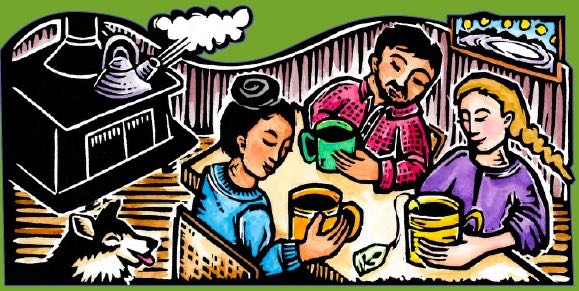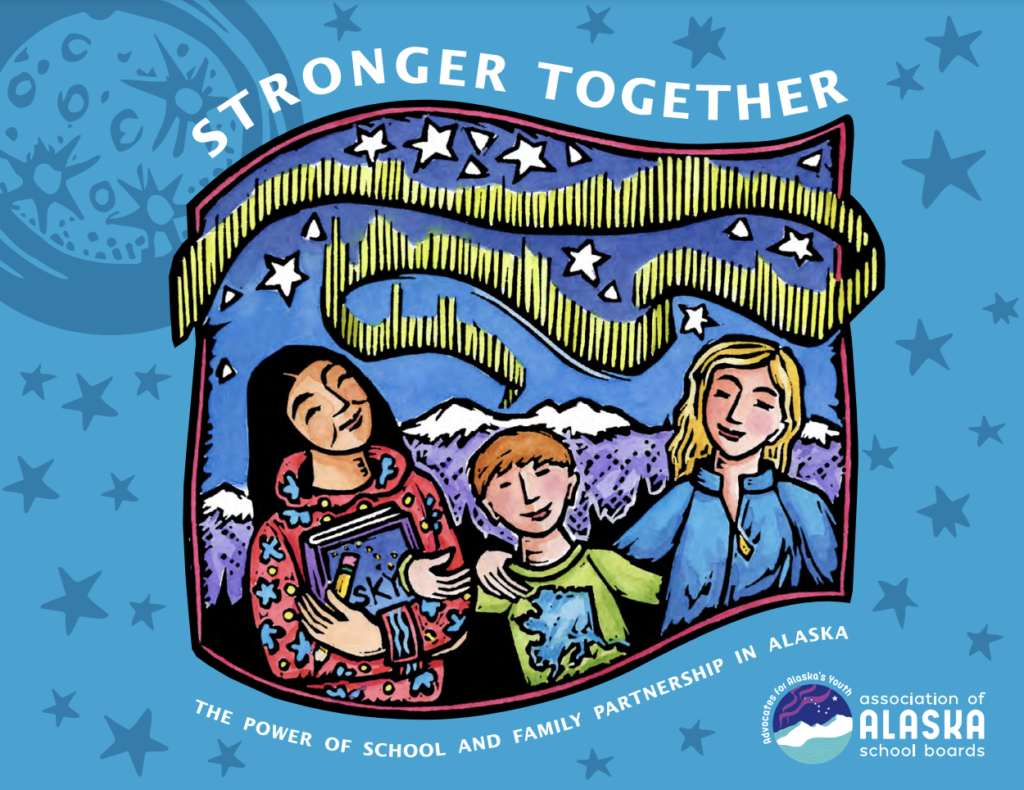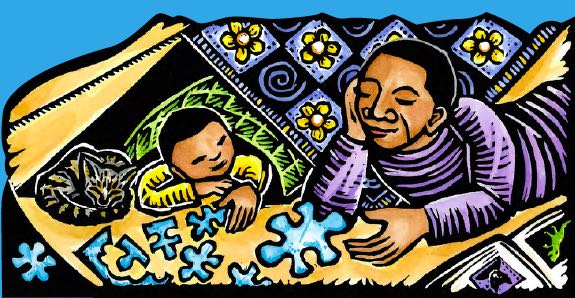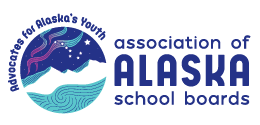Family-School Partnerships
Family-School Partnerships
A family-school partnership is an equal relationship. This means families and educators work together to support children’s growth and success from birth through high school and beyond. School staff and families see one another as an asset and a critical part of student success, where families are integral players in shaping their child’s learning.
Partnerships require both mutual trust and investment to build strong relationships. As schools and families gain a better understanding of each other and more experience working together, roles can be easily identified to effectively support student learning and development.
Why Do Family-School Partnerships Matter?
Family engagement in a child’s education is the most accurate predictor of student achievement regardless of family income or socioeconomic status. Research shows that when families are actively involved in their child’s education, the child has higher academic achievement, better attendance, higher graduation, and improved social skills and behavior.*
- Families are children’s first teachers and their most influential role models.
- Alaskan students in grades 6 through 12 who state their families are involved in their education are more likely to have better grades and less likely to miss school.
- Effective family partnerships improve the feel of a school and community. When family engagement practices are embedded in schools, staff say they have stronger relationships with students and their families, they feel like they are part of a community, and this improves staff retention.

*Wood, L., & Bauman, E. (2017). How family, school, and community engagement can improve student achievement and influence school reform: Literature review. American Institutes for Research and Nellie Mae Foundation; and Sheldon, S. B., & Jung, S. B. (2015). The Family Engagement PartnershipStudent Outcome Evaluation, Johns Hopkins University School of Education.
What Can School Districts Do to Improve Family-School Partnership?
- Use a research-based framework, such as Stronger Together: The Power of School and Family Partnership in Alaska. This is a guide for school staff to integrate family partnership practices. This offers core building blocks, school-wide family partnership planning tools, and additional ideas on how to support family partnerships at a distance.
- Assess how your district or school is doing; use a family engagement scanning tool and your family school climate data to better understand and improve upon your family engagement work.
- Develop a family engagement plan for each school. This should include specific strategies to engage families in decision-making, learning, and climate-building.
- Adopt AASB’s recommended family engagement policies.

“After getting a better understanding of what family engagement and partnerships look like, I thought, ‘duh,’ how did I not see that partnering with families was actually an equity issue, and would result in better outcomes for my students.”
Alaska principal
Alaska Family Engagement Center
The Alaska Family Engagement Center (AFEC) is funded by a grant from the U.S. Department of Education, and many of the resources have been developed through funding with the Carnegie Corporation of New York and the Reuben E. Crossett fund.
AASB partners with the Alaska Department of Education and Early Development (DEED) and Southeast Alaska Regional Resource Center to strengthen and share the best practices for family engagement around our state.
AFEC is part of a national network of state family engagement centers. AFEC aims to improve school-family partnerships across the state by working with 13 school districts to develop training, resources, and activities for schools and families. The work is also guided by a Family Advisory Board and Alaska Family Engagement Center Coalition.

How Can School Staff & Administrators Get Started Working on Family-School Partnerships?
- Look at your family surveys and family data in the School Climate and Connectedness Survey. What are families’ perceptions of school and learning? How are they communicating with schools? What are the barriers for participation in their child’s formal learning?
- Identify family partnerships as a priority in your long-range plan, hiring practices, policies, and protocols within the district.
- Seek ongoing professional learning opportunities to build confidence and strategies through training in skills and best practices for creating positive family-school partnerships. Click here to request learning or coaching.
- Host a book study on Stronger Together: The Power of Family and School Partnerships.
- Review key strategies for building culturally responsive and authentic relationships with families.
- Build on what families and students know, and incorporate at-home discussion prompts for students.
- Offer tools and opportunities for families to support social emotional and academic learning.
- Host dialogues to better understand families’ interests and school partnership requests.
- Review and adopt AASB’s recommendations on family engagement policies.

A Note on Equity in Family Engagement
Successful family partnerships are a path to equity for all students. All families have the capacity to help their child, regardless of education level, socio-economic status, or other factors. Families are the experts on their student’s habits, strengths, needs, and temperament. They are also critical in providing the conditions that support learning. If we are committed to improving student outcomes, we have a responsibility to work towards authentic family partnerships. This may include strategies that work for most families and more tailored strategies that meet families where they are. This may require taking a look at access and resources to support student learning.
Resources
- Stronger Together webinar, recorded October 22, 2020
- Stronger Together: The Power of Family and School Partnerships, Association of Alaska School Boards, 2020. This is a guide for school staff to integrate family partnership practices. This offers core building blocks, school-wide family partnership planning tools, and additional ideas on how to support family partnerships at a distance.
- Transforming Schools: A Framework for Trauma Engaged Schools in Alaska. The framework considers how we create conditions for learning that are trauma-engaged and incorporate social emotional skills. This chapter takes a look at the families’ role in trauma-engaged schools and the opportunities to work collaboratively with families on regulating stress.
- Dual Capacity Framework, Mapp and Bergmann, 2019: This national framework is an essential resource on family partnership and engagement. Using existing research and best practices, this second version of the dual capacity framework is designed to support the development of family engagement strategies, policies, and programs.
- Family School & Community Engagement
- AASB Commentary Article: Family Engagement conversation Continues at AASB March Fly-In
